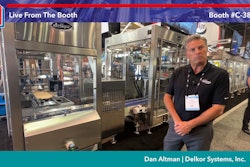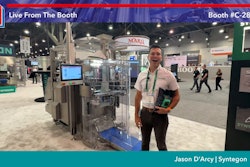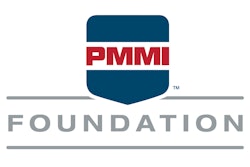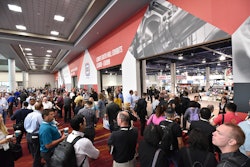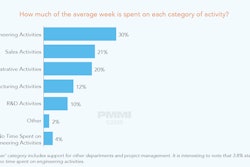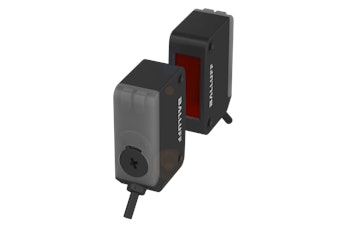
Transcript of Audio
Hello, I’m Pat Reynolds of Packaging World magazine here with a look at a few things that caught my eye on the first day of Pack Expo Las Vegas 2023. Alliedflex Technologies used PACK EXPO Las Vegas to introduce the Push & Dose Sprinkle Pouch system. Developed and patented by Norway’s Fimtech the concept has been in commercial use in Europe for several years. Recently Fimtech and HDG, the German maker of horizontal form/fill/seal systems, struck a licensing agreement naming HDG as the exclusive maker of machinery designed to make Push & Dose pouches from rollstock. As the distributor of HDG equipment in North America, Alliedflex is able to offer the Push & Dose concept in the North American market. Push & Dose is a standup pouch with a perforated tear-off top that holds 1 to 3 oz of product depending on product density. It lets users release sprinkles or spices or fish food or just about any other flake-type product by simply inverting the pouch and squeezing the top two corners toward the center. Inside the pouch is a food-grade silicone membrane heat sealed to the pouch material much like a roll-fed zipper reclosure feature is applied to a stand-up pouch. Die-cut into this membrane are slits that widen into holes when you squeeze the top, thus releasing product. The holes narrow back down to slits when the consumer stops squeezing, plus a pair of “wings” that overlap each other serve to close the pouch with the help of the spring tension of the pouch. At Alliedflex’s Booth SL5931, two different pouch-making systems were on display. For brand owners or contract packagers with high-volume requirements, a hf/f/s system from RDG was busy cranking out Push & Dose Sprinkle Pouches from rollstock at speeds to 50 pouches/min. But also on display was the Alliedflex FLX Alpha, which fills and seals pre-made pouches at considerably slower speeds. As with any flexible packaging format, Push & Dose has a number of advantages over the plastic or glass rigid containers it stands to replace. No labels need be added to printed film, nor is a closure required. Not to mention the distribution, warehousing, fuel costs, and overall logistical costs that are inherent in getting rigid containers through the supply chain. Meanwhile, over on the labeling machinery side of things, WLS https://www.weilerls.com, a ProMach brand, introduced an innovative height-adjustable labeling option for its popular VR-72 labeler. This first-of-its-kind solution automatically adjusts the height of the conveyor, and thus the containers, to effectively change the label height right at the point of application when conditions call for it. The high-speed VR-72 can be programmed for a label height for one entire batch or programmed to dynamically adjust the height of each label applied. When equipped with the height-adjustable labeling option, the VR-72 primarily runs vials and bottles containing liquid pharmaceuticals, biotech products, nutraceuticals, personal care products, cosmetics, and other consumer goods. According to WLS sales engineer Harry Anderson, there are a couple of scenarios where this capability is useful. One scenario might involve an injectable drug product that must be administered in varying concentrations. For Batch A the health professional or consumer may need to add some other solution to a fill line, preprinted on the label, that is exactly X millimeters from the bottom of the vial. But for Batch B, that solution must be added to a fill line that is Y millimeters from the bottom of the vial. Without the adjustable-conveyor feature, two different labels would have to be inventoried, one printed with a fill line for Batch A and one printed with a fill line for Batch B. But with the height-adjustable menu-driven VR-72, the same label can be used for both batches and still the fill line will be exactly where it needs to be for both batches. Not only does that reduce cost, it simplifies inventory and improves production efficiencies. Another scenario has more to do with how consistent the placement of a pressure-sensitive label is on its release liner. Where the label is positioned on the release liner may be different in the middle of a reel of labels than it is at the beginning or end. The new feature on the VR-72 lets the conveyor dynamically adjust to compensate for these inconsistencies so that every label is applied accurately. Anderson says the adjustable-height function is suitable for speeds to 200 containers/min. He emphasizes that the only portion of the flex link tabletop chain conveyor that gets adjusted is the section right at the vacuum drum that actually receives the label from the release liner and applies it to the container. “While the label is on that drum we have a vision system detecting where the bottom of the label is on the drum,” says Anderson. “Once we know where the bottom of the label is, that data is sent to a linear motor that determines if any adjustment in conveyor height is needed.” The vision system on the labeler demonstrated at PACK EXPO Las Vegas was from Cognex and the linear motor was provided by Linmot. Minimizing machine footprint is always an important goal in just about any packaging operation, and two good examples of how to do it were on display at the massive ProMach booth in PACK EXPO’S Central hall. One was from Rennco and the other from Wexxar Bel. Rennco debuted its Micro VCCL (Vertical Cup Counter Loader.) This machine was developed in response to feedback from customers operating with limited floorspace but needing the same throughput and labor savings as achieved on Rennco’s traditional VCCL packaging systems. The new Micro version reduces machine footprint by 30% without sacrificing speed or reliability through a proprietary shuttle tower infeed that eliminates the need for the traditional staging area and belt infeed. The dual-lane tower design is capable of handling 330 cups per minute per lane. The machine also maintains cup reject and manual reload functionality for quality control. The machine can be integrated with upstream and downstream automation through its powerful Allen Bradley processor; customers have the option to attach a common case packer to the discharge area to increase returns in efficiency. As for the Wexxar Bel solution, it was all about high speed case forming and labeling all in one efficient solution in the new WLF30T Fully Automatic Case Former. It incorporates a labeling system from its sister ProMach brand, EPI Labeling. This partnership gives customers the ability to label cases prior to formation at speeds of up to 30 cases per minute. The ability to label the case prior to packing is ideal, particularly for food applications where the case may be going to a cold room after forming. That’s because labeling the case before forming ensures the label is properly adhered and allows the machinery to operate outside the wet or cold area. The WLF is based on Wexxar Bel’s reliable WF30 platform with an easy-load bottom pick magazine. It is integrated with an EPI M2 labeler that is located inside the magazine section of the machine, a design that both protects the labeler behind clear Lexan glass doors while also saving valuable floor space.


